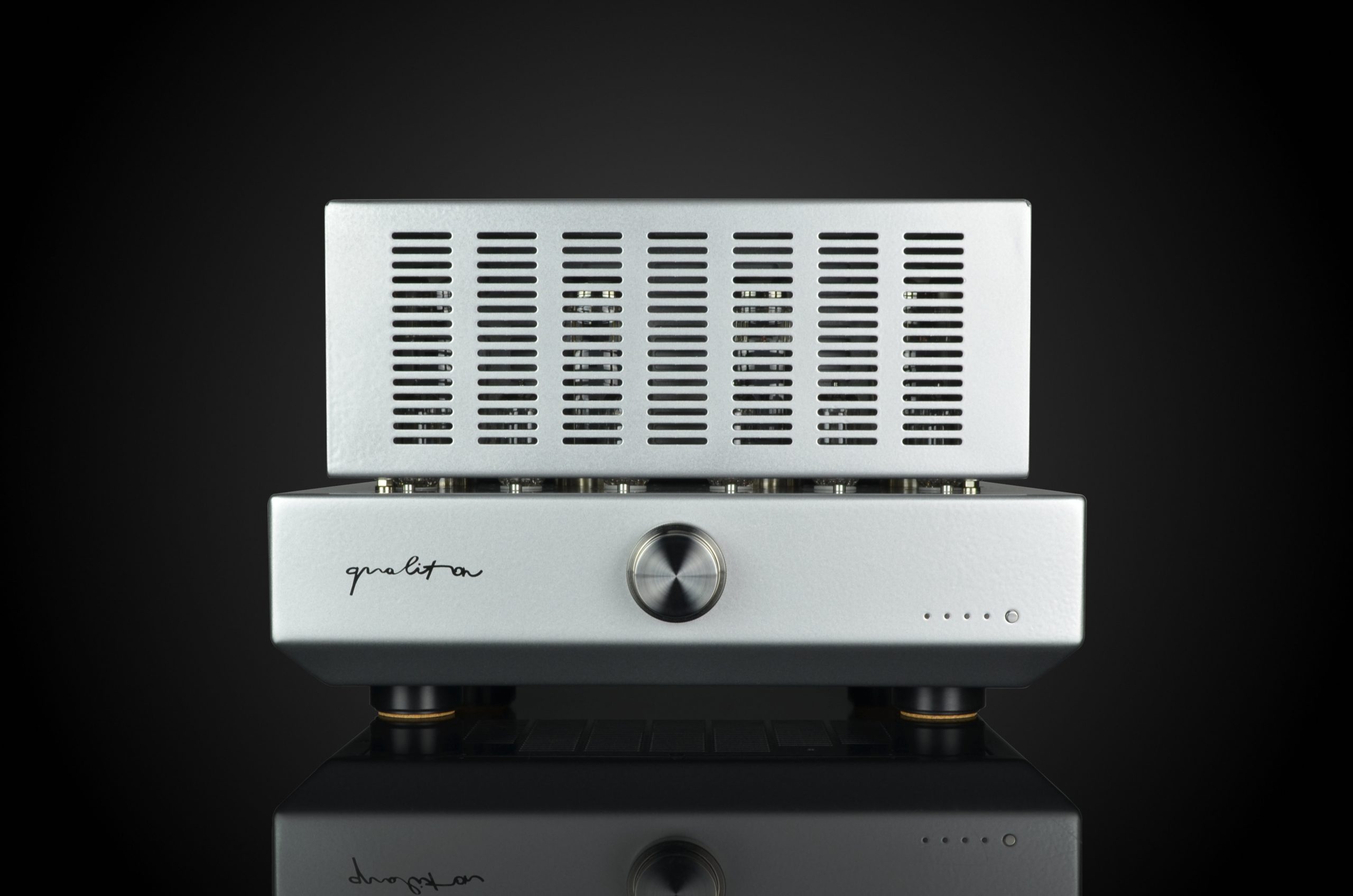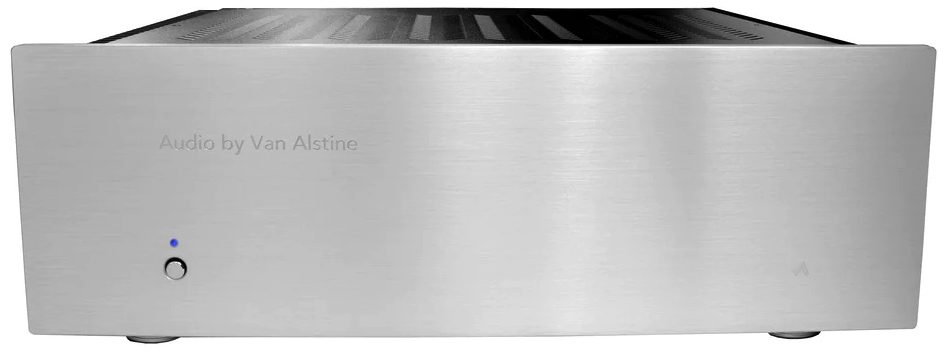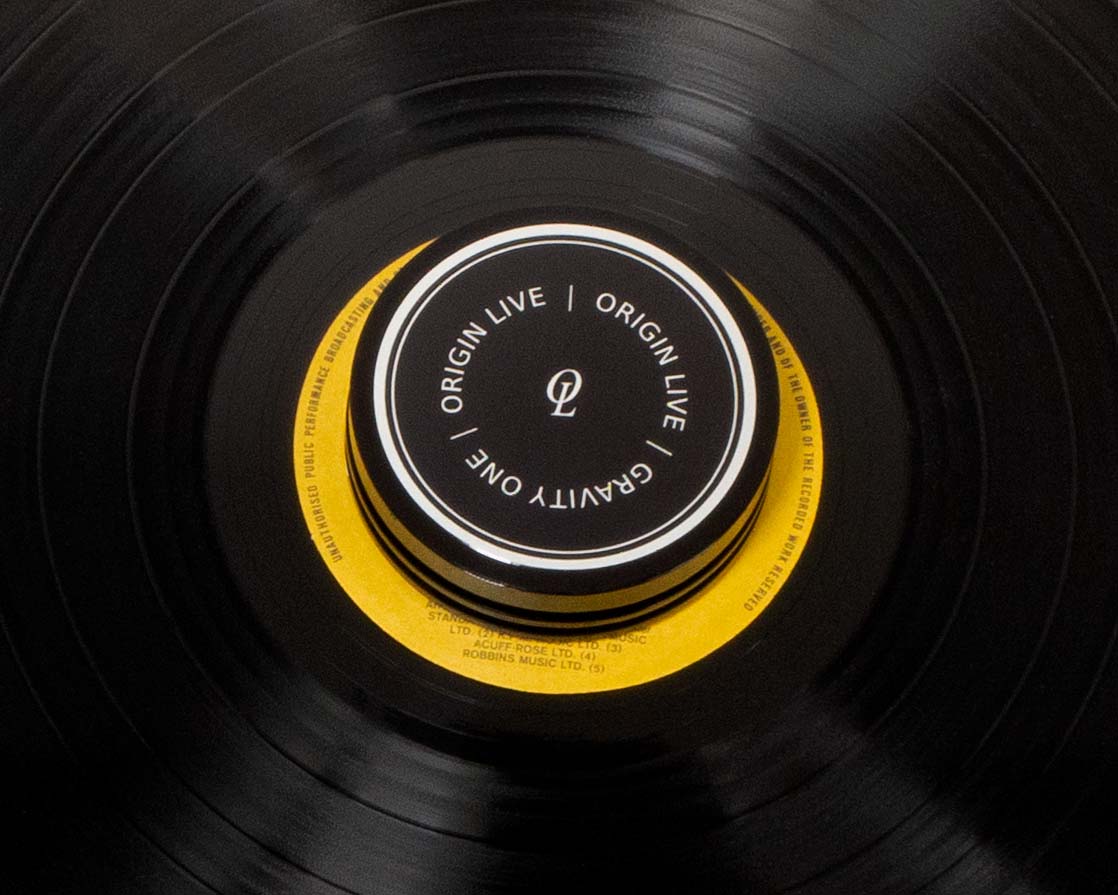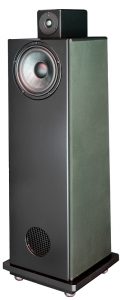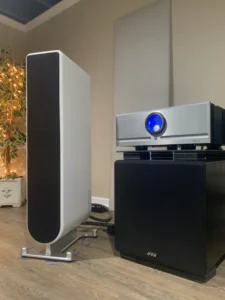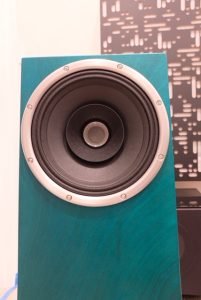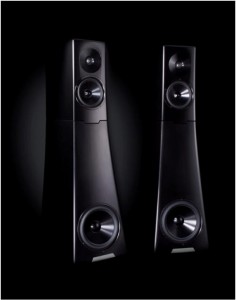In 2013 I wrote about Sweden's Larsen Hifi Model 8 speakers (HERE) a veritable bargain at $6,995 for those with such resources. The musical and organic sounding Model 8 notably provided exceptionally deep bass (~24Hz) from a small box (HWD 36" x 11" x 13"). My wife and I enjoyed the speaker very much as did several audiophile friends.
While the tonal balance was smooth, realistic and enjoyable, the bass performance had me scratching my head. At times I was unsure whether my 15" sealed subwoofers were playing with the Model 8s and often my room had exceptional bass response on both movies and music only to discover my subs weren't connected. It should be noted that the Larsen's bass, though boosted was not boomy and well integrated, hence my characterization of a "smooth frequency balance. Though I waxed rhapsodic about bass, that speaker's timbre and tone were also smoothly delivered throughout the room and not just in the sweet spot, but more on that later.
I found the Model 8 to be a really enjoyable speaker. I spent a good deal of time talking about how the Larsen's presented images. Many modern speakers provide a hyper delineation of position and size of images, images that are much more solidly conveyed than live music, in my experience. If you want that hyper image delineation, hey, go get it. If you think you need it because it's more realistic, well, hold your horses. My experience says it's very difficult to determine the location of violins in a large concert hall no matter what your sitting position - so if "realistic imaging" is your goal, go listen to a live concert after listening to the Larsens and tell me the latter don't sound more like the former than the hyper delineated images. Just sayin'.
The Model 4, under review here, shares much of the Model 8's sonic signature, performance (as I recall several years later) and design ideas. The Model 4 sports a mid/bass driver and a tweeter angled into the room. The Model 8 has two bass drivers, a midrange driver and three tweeters. Like the Model 8s, the Model 4s are designed to use the front wall (the wall behind the speaker, but in front of you) to produce its deep bass response. Pulling the speakers out into the room will drastically negate their considerable performance, resulting in a tinny sound. Placed as designed up against the wall, or within a few inches of it, and you're about done. My sense of the Model 4s is that they sound and behave much as the Model 8s did, with nearly as much bass; more on that later, too.
The Model 4, even more than the Model 8, will have little visual impact on your room. They are available in Mahogany, Maple and a white lacquer and are likely to disappear in many rooms. The review pair were in Mahogany and fairly disappeared next to my black Ikea Expedit, looking far too small, at 9" x 10" x 30" to be producing the sound they were. The 4s will need a little bit of space to the left and right around them at the height of the speaker grills to create images in your listening room. In my instance, I allowed about 24" inches away from each side of the speaker and got a nice, airy presentation of music. The Model 4 rose to just above my knee height. The Model 8 sports a bit of tweeter decolletage to produce an insightful, though not over incisive treble. The Model 4's grills cover both drivers. The grill also hides material that aids in controlling dispersion of the drivers. So the grills need to remain on. 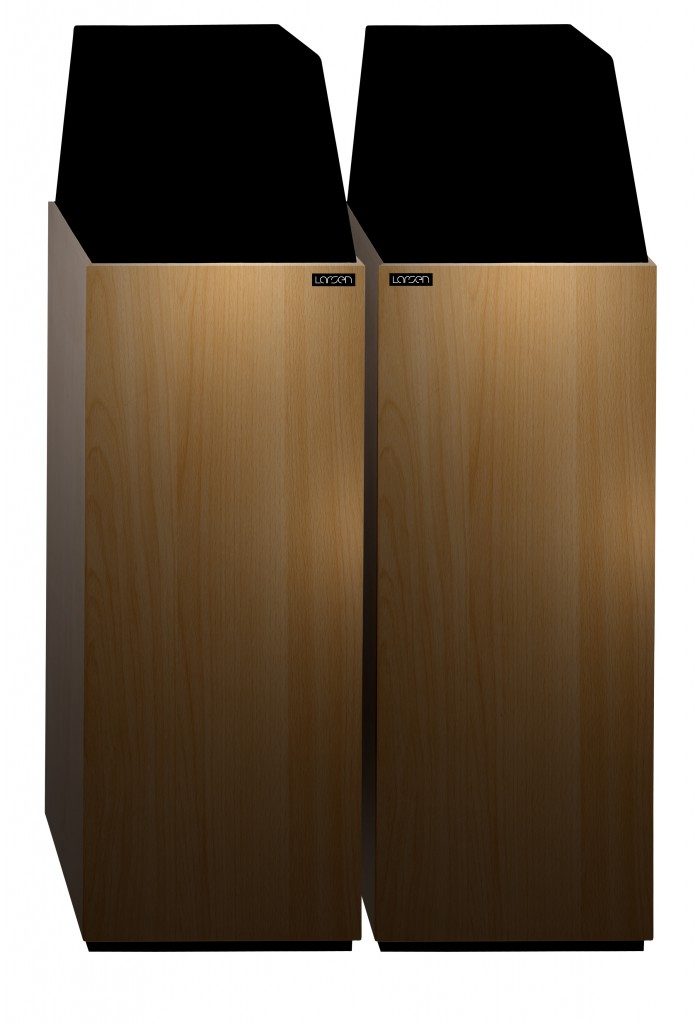
My reference system has speakers with amplifiers built-in. This precludes changing only one component when comparing. Thus, the comparison required swapping out my amplification, speakers, power cords and a long interconnect for a new speaker, amplifier (Parasound HCA1205) and speaker wires (my custom mix of Romex based speaker cables using ideas from the late Allen Wright of Vacuum State Electronics (The SuperCables Cookbook). The rest of my system remained in place.
As a further comparison, for people "moving up" to a system of separates, I also connected the Model 4 speakers to a Denon AVR-2805 receiver circa 2005. It's one thing to reach your destination but it's another while on the road, so... I wanted to hear what the Model 4s sounded like with entry level amplification. And, finally, I inserted Elac's Discovery DAC/Server/Preamplifier in both iterations.
With all iterations of amplification the overall impression was of performance beyond what seasoned audiophiles would expect for the asking price. Tone and timbre were pleasant and realistic with the Parasound amplification in place. Frequency extension was on par with much more expensive speakers, if not quite to the same level of resolution and refinement, with realistic tone and timbre. The Model 4 overachieves much as Vandersteen's 2 series speakers did in the late 80s and early 90s—not perfect and not everyone's idea of wonderful but unquestionably an overachiever.
Both the Parasound/YBA Alpha 1 and Denon drove the Larsen's well and easily. After two months of listening I think the Model 4 Larsen speakers might be the holy grail for some, depending. A music lover who wants exceptional performance in a package that integrates easily with their life and lifestyle, rather than the other way around will find placing the speaker up against the front wall a nice way to have music, without the stereo having you. Although my reference speakers are stand mount speakers, they are far more imposing than the Model 4s. With the 4s in house, I caught myself looking for what was making music in my listening room, not only had the speakers disappeared as the source of the music, they were so small they nearly disappeared, too. I might characterize this batch of candidates as people looking to get in and out of the hobby with their wallet, mostly, intact and back to living their lives enjoying music.
The Model 4s, like the Model 8s, might also seduce the budding, or is it festering, audiophile. Most changes to my system were easily heard. So, as you sock away money to upgrade the rest of your system, you'll have a speaker that rewards your work.
Timbre and tone are of surprisingly high quality without noticeable deviations. As with the Model 8 speaker, the sound is widely dispersed without becoming lean or boomy outside of the normal audiophile "seat" for listening. You can walk around the room without a significant change in tone, unlike some speakers which change character just when you stand up at the listening seat, where others might punish a listener for slightly turning their head. This makes the Model 4 a house friendly speaker. Additionally valuable is that the Model 4 delivered bass at or below 30Hz, which is quite an accomplishment for a small sized speaker costly "only" $1995. Using several YouTube videos purporting to deliver 25 Hz and 30Hz I got at least to 30Hz in my room, though Larsen lists its -3dB point at 28Hz. For my comments, I rely on the notion that if several videos claiming 30Hz tones all sound about the same loudness, such videos are "reliable" or at least sort of. Whether it's actually 28Hz or 31Hz, to me the point is moot. If it's satisfying, then you're satisfied, if you're not... . So, that's my caveat for you.
My reference speakers retailed for close to $8,000 when purchased ten years ago (with amplification built-in) and don't do 30Hz on those same tracks. Midrange performance was sweet if not as precisely replayed as through my reference speakers. On "Molly by The Sea" (Simex Recordings) an excellent balance between the body and strings of the violin was achieved. Timbre of the piano was quite good, but missing some of the weight that instrument presents in real life - but there are legions of speakers that don't do that either.
Reaching into the upper midrange, "A Christmas Carol"—a boys choir (Simex Recordings) provided a nice rendering of timbre. Similarly Emmy Lou Harris on "I Heard a Call" yielded a delightful and striking rendering of her vocals and the twang of what I heard as metal strings on her guitar were convincing. Turning to male vocals, Frank Sinatra's "Under My Skin" from Songs For Swingin Lovers was beautifully rendered, though the resonant qualities of Frank's voice missed some of the minute detail my reference speakers show. The strings on that track were pleasantly presented with a good facsimile of real strings. The reedy qualities of what I believe is a baritone sax were also capably presented. As a larger picture, the rhythmic qualities of the song and the dynamic shading in combination with the tone and timbre made for a satisfying presentation.
Lastly, I found the "imaging" of the Model 4 to be consonant with my experience of live music in a larger hall. The Model 4 shows the location of the performer, often the size of the hall and depending on the last element will provide information on the performer as well. Thus, I found much greater image specificity of Emmylou Harris than the boys choir in "A Christmas Carol." I chalk this up to a single performer should be easier to identify than many vocalists whose voices are intended to blend. But, if you need to see the precise location of each singer in a choir or orchestra on all of your recordings... after you return from your therapist, you should probably look at other speakers.
My reference speakers tend to be unkind to certain components, you could say they don't play nice with everyone. Sure. When I had passive ATCs, the Parasound HCA 1205 showed up as a bit "rough" sounding. In conjunction with my YBA preamplifier, LampizatOr Euforia DAC and Oppo BD-105 disc player the 1205 with the Model 4s did not underscore or highlight that roughness, so maybe that's a demerit, but... and this is an important "but," the Model 4s easily revealed the different quality of resolution between my LampizatOr Euforia and Elac's over-performing Discovery server/DAC/preamplifier. PF's Dean Seislove came by for a short listen and easily heard the difference, with a distinct preference for the Euforia.
Continuing the topic of resolution, the treble extension on the Model 4s greatly benefitted from Larsen's soft footers. The footers come at no cost and if you're not a reviewer you'll be getting an unopened speaker, pristine with all that you're supposed to have. Michael Vamos, importer of the Larsen speakers, delivered an open box sans footers. He mailed footers to me after I'd had the speakers for a few days. I was uncertain they'd make any difference but, on my hardwood floors, they allowed the tweeter performance to solidify and lighten up in a welcome increase in resolution. So, they did show off an increase in resolution, even if they didn't shame the HCA 1205.
With my reference setup, the Model 4s played remarkably well, eliciting from my wife, a "gosh these are nice," an infrequent occurrence. What came out later, was my wife preferred the warmer, kinder presentation of the Model 4s through the Parasound to my $8,000 reference amplified speakers. What? Sacrilege! I think she preferred a more relaxed, sweet midrange rather than the occasionally cruel rendering of my reference speakers as well as their much lower physical profile. It should be noted that she is not as sensitive to macrodynamic shading as I am and in that realm, my reference speakers were well ahead of the Model 4s.
Removing my reference preamplifier and the Parasound preamplifier, the nearly 15 year old Denon receiver and Lampizator the Model 4's performance was a considerable step down in terms of resolution and ease in identifying the timbre of instruments, though the tonal balance did not evidence significant tonal deviations. The presentation became darker and oddly a bit more midrange-y. The result was a mix that was harder to hear as deeply into and was simply less... engaging, or engaging in the way audiophile nuts listen. Bypassing the LampizatOr for the Elac Discovery, the Model 4s retained a warm and enjoyable presentation with decent soundstaging that would likely be very satisfying for someone who isn't going to nail themselves into the sweet spot and require a double espresso to ensure they've heard all there is to hear. And, yes, the presentation here was a bit rougher than the Parasound/YBA/LampizatOr combination, but I am unable to tell you whether the roughness here was exacerbated by the Denon, my home brew speaker cables or the Elac or, as is most likely, the combination of all three. So, in audiophile terms, if not listener satisfaction, the Model 4s are resolving enough to reward upgrading the rest of your system.
Some readers might ask, if the Model 8 at $6995 only goes to 23-24Hz and the Model 2 goes all the way to 28Hz, why not just take the Model 2. Good point. While the Model 4 does hit 30Hz, it doesn't do it with the aplomb that the Model 8 does, nor my reference speaker. Large crescendos at louder volumes were less satisfying than my recollection of the same with the Model 8 speakers. If you had the money, the space and the willingness, in my mind, there is no reason not to go with the Model 8. Although part of my valuation is that my listening room is about 5500 cubic feet that also opens into another space, so it's really even bigger than 5500 cubic feet. If you're in a smaller room are price sensitive and space limited, the Model 4 is still a winning speaker.
Your music loving friends that don't aspire to be or insist on degenerating into audiophiles are going to love the performance of the Model 4s. An emotionally engaging experience is offered that includes pretty exceptional macrodynamic contrasts from such a small speaker, making them a finish line speaker in medium to small rooms. They do "deep bass" which is a holy grail for some, but do it with a measure of subtlety. Imaging will sound like real live music in rooms populated by dozens if not hundreds of people like you, rather than a performance for just one listener. As a final bit as a somewhat efficient speaker (87dB at 8 Ohms), you won't need a behemoth of an amplifier to create a satisfying system. This last bit will allow you or your friends to consider a broader range of good to excellent amplification options at reasonable prices.
If you've heard the Model 8s at a show and liked them, the Model 4s are voiced very similarly, though the 8s do have more bass and composure, and a greater capacity to rock a room. The Model 4s are a bit less dynamic, as you'd expect with just two drivers versus the six in the Model 8s. The Model 4 is an easy recommendation, whether as a starting point for your budding audiophile friends or as a destination speaker for music lovers that will accommodate their lifestyle.
Larsen Model 4 Loudspeakers
Retail: $1995
Audio Skies
All images the property of Larsen Hifi






